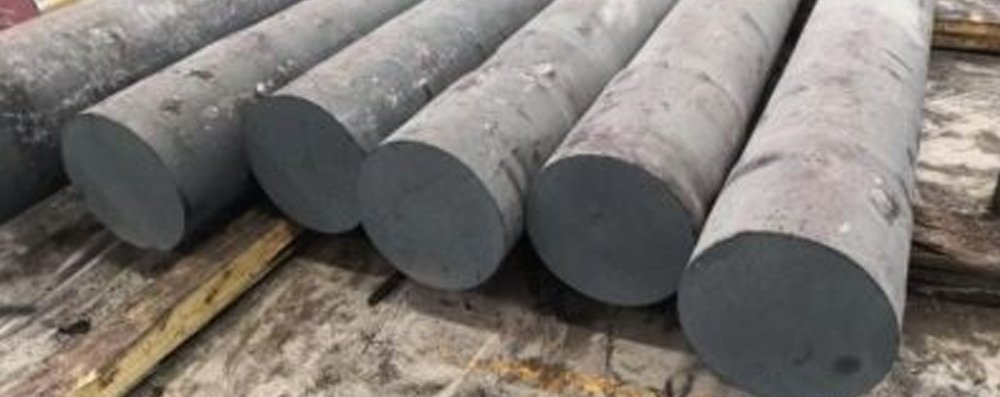Introduction
C50 is a high-strength, medium-carbon steel that provides a good balance of toughness, wear resistance, and machinability. This steel grade is ideal for applications where moderate tensile strength and high wear resistance are required. It can be heat treated to enhance its mechanical properties, making it suitable for parts subjected to wear and fatigue. C50 is commonly used in automotive, industrial machinery, and construction applications.
Uses/Applications of C50 Grade:
- Crankshafts: Used in the manufacture of crankshafts that require high strength and fatigue resistance.
- Shafts: Ideal for medium-duty shafts that require enhanced strength and wear resistance.
- Machine parts: Suitable for manufacturing a wide variety of parts exposed to wear and stress.
- Axles: Used in the production of axles, particularly in automotive applications, where both toughness and wear resistance are essential.
Properties of C50 Grade:
- Medium-carbon steel offering an excellent balance of strength, toughness, and wear resistance.
- Hardness and strength can be improved significantly through heat treatment.
- Good machinability in normalized or annealed condition.
- Suitable for surface hardening to improve wear resistance.
- Versatile for use in many industries including automotive and heavy engineering.
- Gears: Can be used in the production of gears that require moderate strength and fatigue resistance.
- Pins: Ideal for pins and other components subjected to high load.
- Bolts and fasteners: C50 is also used for making high-strength bolts, nuts, and other fasteners in mechanical engineering applications.
- Industrial machinery components: Various components in machinery that require both toughness and good machinability.
Chemical Composition (Typical):
| Element | Content (%) |
| Carbon (C) | 0.47 – 0.55 |
| Manganese (Mn) | 0.60 – 0.90 |
| Silicon (Si) | 0.10 – 0.35 |
| Sulfur (S) | ≤ 0.05 |
| Phosphorus (P) | ≤ 0.05 |
| Iron (Fe) | Balance |
Mechanical Properties (Typical in Normalized Condition):
| Property | Value |
| Tensile Strength | 650 – 850 MPa |
| Yield Strength | 350 – 450 MPa |
| Elongation (in 50 mm) | 14% min |
| Impact Strength (Charpy V-notch) | 35 J min |
| Hardness (Brinell) | 170 – 250 HB |
| Hardness (After Hardening and Tempering) | 280 – 320 HB |
Physical Properties:
| Property | Value |
| Density | 7.85 g/cm³ |
| Modulus of Elasticity | ~210 GPa |
| Thermal Conductivity | ~50 W/m·K |
| Specific Heat Capacity | ~460 J/kg·K |
| Electrical Resistivity | ~0.17 µΩ·m |
Forging:
- Forging Temperature Range: 950°C – 1200°C.
- For best results, heat to a temperature range of 1050°C – 1150°C and proceed with the forging process.
- Cooling should be done in a controlled manner to prevent cracking and preserve material properties.
Heat Treatment:
- Annealing: Heat to 700°C – 750°C and allow slow cooling in a furnace to soften the steel and relieve internal stresses.
- Normalizing: Heat to 850°C – 880°C and air cool to improve toughness and refine the grain structure.
- Hardening: Heat to 830°C – 860°C, followed by quenching in oil or water depending on the application and desired hardness.
- Tempering: After hardening, temper at 550°C – 650°C to adjust hardness and toughness as required for specific applications.
Dimensional Tolerances:
- Hot Rolled Bars: Tolerances in accordance with BS 970 or equivalent standards for medium-carbon steel bars.
- Cold Drawn Bars: Provide enhanced precision in diameter and surface finish for applications requiring higher tolerances.
- Forged Bars: Custom tolerances available based on the requirements of the application.
- Straightness, roundness, and surface finish are controlled to industry standards for enhanced quality.
Machinability:
- Good machinability in the annealed or normalized state.
- Can be machined using standard tooling such as high-speed steel (HSS) or carbide tools.
- Drilling, milling, turning, and boring can be carried out efficiently with minimal tool wear.
- Cutting fluids should be used to enhance tool life and surface finish during machining.
Corrosion Resistance:
- Moderate resistance to corrosion in untreated form, making it prone to rust when exposed to moisture or corrosive environments.
- For outdoor or marine applications, appropriate coatings (e.g., galvanizing or painting) should be applied to prevent corrosion.
- Proper storage and protective measures should be taken to extend the life of components made from C50 steel.
Weldability:
- Moderate weldability when in a normalized or annealed state.
- Preheating to 150°C – 250°C is recommended for welding thicker sections.
- Use of low-hydrogen electrodes or appropriate filler materials is recommended for best results.
- Post-weld heat treatment is necessary to restore mechanical properties after welding, particularly for components that will be subjected to fatigue or high-stress applications.
Available Form:
- Hot Rolled Bars
- Cold Drawn Bars
- Precision Ground Bars
- Forged Bars
- Custom sizes and shapes are available on request based on customer requirements.
- Standard sizes: Ranges from small diameter bars to larger sections for heavy-duty applications.
- Supplied in annealed, normalized, or quenched and tempered conditions based on the specific application.
Conclusion:
C50 Carbon Steel is an ideal material for medium-strength, high-durability applications requiring good wear resistance and machinability. Its ability to be heat treated for enhanced properties makes it versatile for various engineering applications, particularly in automotive and industrial machinery sectors. While it offers moderate corrosion resistance, proper coatings and treatments can enhance its performance and durability in harsh environments. Its strength, toughness, and flexibility in heat treatment make it a reliable material for shafts, gears, axles, and many other components in mechanical systems.
Related Products :20C8, ASTM A36, 20MN2, 55C8, 40C8, C45, ASTM SA-105, C50, C20, C55, EN3B, C55 Mn2, C60, C45, EN9, EN8, EN8D, IS 2062, EN43B, S355J2G3, S40C, SAE 1010, SAE 1018, ST52.3, 20MN2, Maps


